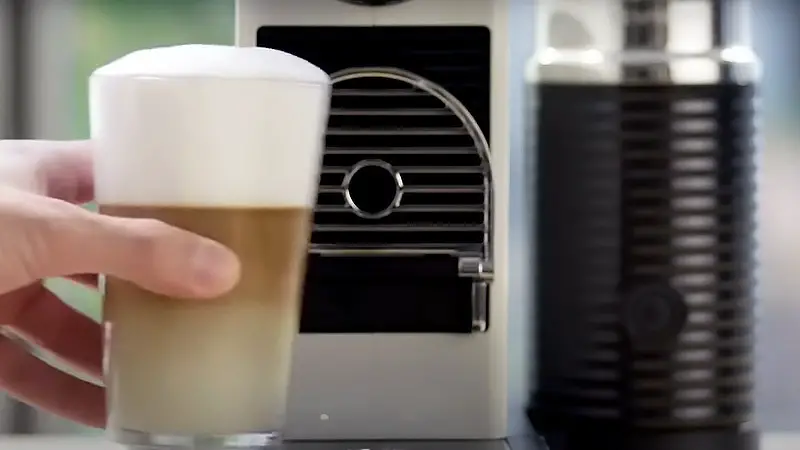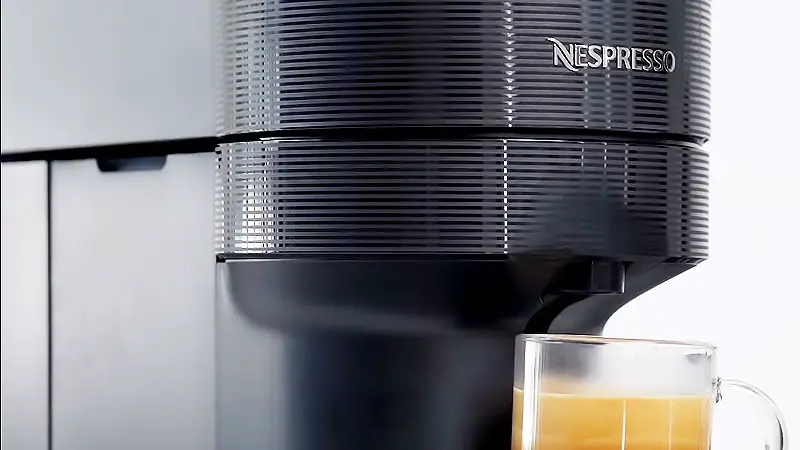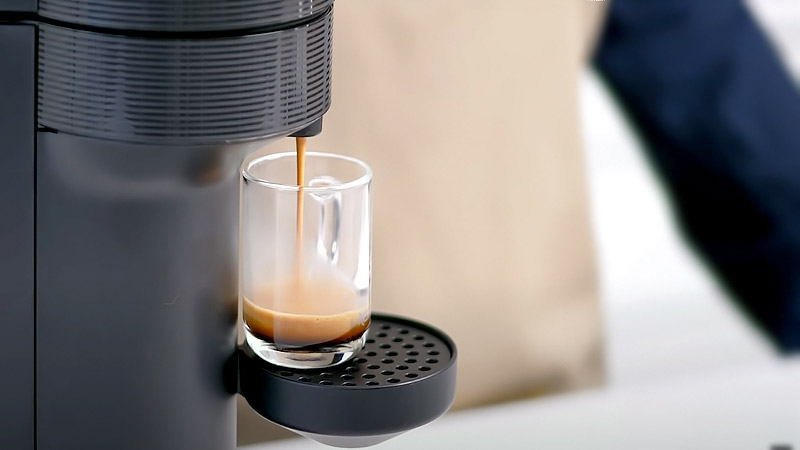As an Amazon Associate, I earn from qualifying purchases at no extra cost to you.
Quick Steps to Fix Your Nespresso Red Light Issue Easily
If you love coffee, a blinking red light on your Nespresso machine can be annoying in the morning. The Nespresso red light issue is common and can happen for different reasons like scale buildup, coffee residue, or improper usage. But don’t let this red light stop you from getting your daily caffeine fix. In this guide, we will show you how to fix the Nespresso red light issue and keep your coffee machine working well. Understanding the causes and taking necessary actions will help you solve the issue and prevent it from happening again.
Understanding the Nespresso Red Light Issue
Knowing the Nespresso red light problem is important for coffee lovers who depend on these machines for their daily coffee. The red light means there’s a problem with the Nespresso machine. When the red light blinks, it can disrupt your morning routine and make you crave your favorite brew.
The red light problem can show up in different ways, so it’s important to figure out why it’s happening. Common symptoms include the machine not turning on, slow coffee flow, blocked coffee flow, weak coffee output, and irregular blinking patterns on the red light.
To solve this issue, we need to understand what causes it. Common causes of the Nespresso red light issue include scale buildup, coffee grounds clogging, water tank problems, malfunctioning parts, and improper usage.
Common Causes of the Red Light Issue
When your Nespresso machine’s red light blinks, it can be frustrating. To fix this issue, we need to know why the red light comes on. Here are the top five reasons:

Scale buildup
Scale causes Nespresso red light issue. Minerals in water can build up in the machine over time. Mineral buildup can block water flow, making the machine struggle while brewing. Scale buildup can harm your Nespresso machine if not dealt with.
Coffee residue
Coffee residue can also cause the red light issue. Nespresso machines have small, intricate parts and pathways for coffee. Coffee grounds or residue can block water and coffee flow, causing brewing issues. Regular cleaning and maintenance can prevent this issue.
Water tank problems
Water tank issues can also cause the red light to come on. Low water levels or incorrect tank placement can cause machine malfunctions. Properly filling and securing the water tank is important for the Nespresso machine to work well.
Malfunctioning parts
Sometimes, the red light problem could be caused by broken parts in the Nespresso machine. These parts may include sensors, pumps, or other components. If any parts break or get damaged, the machine won’t be able to make coffee, and the red light will come on.
Improper use
Using the Nespresso machine incorrectly can cause a red light problem. This means not following the recommended procedures in the manual. Improper use can cause problems like wrong settings and damaged components.
To fix the Nespresso red light issue, understand the common causes and take appropriate action. To enjoy your Nespresso without any issues, find the cause of scale buildup or coffee residue and descale or clean accordingly.
Tools and Materials You’ll Need
To fix the Nespresso red light issue, you’ll need some tools and materials. Having these items ready before you start will make the process easier and give you better results:
You’ll need the Nespresso machine with the red light issue. Unplug before maintenance or troubleshooting.
Fresh and chilly water
Clean water is necessary for rinsing the machine and preparing the descaling solution.
Water and cleaning solution container
You need a container to collect the water and cleaning solution that flows through the machine during cleaning and descaling.
Nespresso descaling solution (if necessary)
To fix the red light issue, use Nespresso’s descaling solution. Follow the instructions for proper usage.
Cloth or sponge
Use a soft cloth or sponge to clean different machine parts. Don’t use materials that can scratch the machine.
Pin or clip?
This tool is useful for unclogging blocked openings like the coffee spout or drip grid.
Water filter (if needed)
Some Nespresso machines have replaceable water filters. Refer to your machine’s manual to determine if it needs a replacement.
Manual
Keep your Nespresso manual nearby. It has useful info on caring for, maintaining, and fixing your machine. You might need it for reference later.
Having these tools and materials ready helps you fix the red light issue quickly and effectively. Being prepared will save you time and frustration when cleaning, descaling, or troubleshooting your Nespresso machine.
Step-by-Step Instructions to Fix the Nespresso Red Light Issue
Having trouble with the red light on your Nespresso machine? Don’t worry, we have a guide to help you fix it. Follow these simple instructions to fix your Nespresso machine and start brewing coffee again.

1. Turn off and unplug the machine
Before troubleshooting, make sure to turn off and unplug your Nespresso machine for safety. This step prevents electrical accidents while working on the device. Let the machine cool down before cleaning to prevent burns or accidents.
2. Empty the drip tray and used capsule container
Remove the drip tray and used capsule container from the machine. Both parts can collect water and coffee grounds, which may cause the red light problem. Empty and clean them well. Use a mild detergent and a soft cloth to clean any coffee stains or residues from these areas. Rinse them with water before putting them back together.
3. Clean the coffee outlet
Clean the coffee outlet gently with a soft cloth or sponge. This is where your coffee comes out. Coffee grounds can build up and block the flow here. Make sure it’s clean and clear. Check for any coffee residue in small spaces. Cotton swabs are good for tight spaces.
4. Clean the capsule compartment
Open your Nespresso machine and remove used capsules. Check for coffee grounds and clean the compartment with a damp cloth or sponge. Make sure there’s no coffee residue here. Clean thoroughly to remove any coffee grounds stuck in the corners or crevices.
5. Clean the spout
Remove and clean the coffee spout on your Nespresso machine. Check for clogged small openings. Clean the non-detachable spout with a cloth or sponge. Use a toothpick to remove any coffee particles blocking the spout. Make sure it’s clear before reattaching it.
6. Clean tank
Drain and rinse the water tank. Make sure it’s clean and free of debris or coffee stains. A clean water tank is important for making good coffee. Clean the lid and opening of the water tank regularly to remove residue. Remove the lid to clean it completely.
7. Clean the grid
Remove and inspect the drip grid from your machine. Coffee residue and grounds can clog here. Clear clogs in a drip grid with a pin or paperclip. Clean it well before putting it back together. Take your time to remove any obstructions that may be blocking water drainage. Rinse the drip grid before putting it back in the machine.
8. Check the water inlet
Find the water inlet on your Nespresso machine. Make sure there are no obstacles that could block the water flow. Clean the water inlet gently with a cotton swab or small brush to remove particles or scale buildup. This step is important because the water inlet is where water enters the machine, and any blockage can affect its performance.
9. Reassemble and turn on
Reassemble your Nespresso machine after cleaning and checking all the components. Ensure proper fitting and securing. Reconnect and power on the machine. See if the red light problem continues. When reassembling the machine, make sure each part is aligned and positioned correctly. Make sure all parts are tightly attached before plugging in and turning on the machine. This step is important to avoid leaks or more problems.
10. Descaling (if necessary)
If cleaning doesn’t work, it could be scale buildup. To descale your Nespresso machine, follow these steps:
- Check the descale indicator: Check the manual for your Nespresso machine to find the descale indicator. If it blinks or lights up, descale your machine. The indicator is usually on the control panel of your Nespresso machine and may look different depending on your model. Respond quickly to prevent more scale issues.
- Make a descaling solution: Buy Nespresso’s descaling solution and follow the package instructions to prepare it. Mix it with the right amount of water as instructed. Usually, the descaling solution is in a bottle or sachets. You must mix it with clean, cold water. Measure water accurately for correct concentration.
- Drain the tank: Empty the water tank before descaling. Drain and rinse the tank with cold water to remove coffee residue and impurities. Rinse and dry the tank completely before continuing. This step is important to avoid diluting the descaling solution and make sure the descaling process works well.
- Pour descaling solution: Pour the descaling solution into the water tank carefully until it reaches the recommended level. Be careful not to spill the solution, as it is acidic and can damage surfaces or clothes. Use a funnel to pour the solution into the tank accurately, if needed. Avoid overfilling the tank to prevent spills while descaling.
- Begin descaling: Follow your Nespresso machine’s descaling instructions, which usually involve pressing buttons and following prompts on the screen. Wait while the descaling solution cleans the machine by removing scale deposits. The machine will guide you with prompts or indicators on its display. Follow these instructions exactly for thorough descaling.
- Rinse well: After descaling, rinse the machine with clean cold water multiple times to remove any remaining descaling solution. This step is important to remove the acidic solution from the internal components. Leaving the descaling solution in the machine can affect the coffee taste and damage components.
- Reset Descale Indicator: Check the manual to reset the descale indicator. This step is important to avoid constant reminders to descale the machine. Refer to the manual for specific instructions on resetting the indicator, as the process may vary depending on your Nespresso model. Resetting the descale indicator helps you track the machine’s maintenance accurately.
- Look for the red light: After descaling, turn on your Nespresso machine and see if the red light problem continues. If it does, try troubleshooting or contact Nespresso customer support. Descaling is important for addressing scale issues, but if there are other causes for the red light problem, they should be dealt with separately.
Follow these instructions to fix the red light issue on your Nespresso machine. Follow this guide to address scale buildup and coffee residue in your Nespresso machine for uninterrupted brewing. If the problem continues, try troubleshooting for your specific Nespresso model or contact Nespresso customer support or a service center.
Preventing Future Red Light Issues
After fixing the red light problem on your Nespresso machine, take steps to prevent it from happening again. Maintaining your machine regularly helps ensure the trouble-free brewing of your coffee. Here are some prevention tips to consider:

Cleaning
Regularly cleaning your Nespresso machine is important to avoid red light problems. Create a cleaning routine: wipe surfaces, clean the drip tray and capsule container, and remove residue from the coffee outlet and capsule compartment. Clean the machine weekly or more often if used a lot.
Use filtered water
Water quality affects scale buildup, which can cause the red light issue. Use filtered water in your Nespresso machine if your tap water is hard or has high mineral content. This reduces scale buildup in the machine’s internal parts.
Follow instructions
Following the manufacturer’s instructions is crucial for usage, cleaning, and maintenance. The manual that comes with your Nespresso machine has helpful instructions for using and maintaining your model. Follow these guidelines for best performance and to avoid problems.
Use good pods
Buy good Nespresso pods for your machine. Cheaper or off-brand pods may clog your machine with coffee grounds or residue. Good pods make brewing consistent and reliable.
Check water quality
Use bottled water or a water filter system if you think tap water is affecting your machine. This step improves coffee taste and reduces scale buildup.
Check water levels
Check the water level in your machine’s tank before each use. Lack of water can cause red light problems. Fill the water tank to the recommended level for uninterrupted coffee brewing.
Descale regularly
To keep your Nespresso machine working well, descale it regularly to prevent scale buildup. Descaling frequency depends on water hardness. Descaling should be done every 300 to 500 brewing cycles or as indicated by the machine’s descale indicator. Follow this schedule to prevent future red light issues from scale buildup.
Store pods correctly
Store coffee pods in a cool, dry place to keep them fresh. Moisture can cause clogs and impact your Nespresso machine’s performance. Use airtight containers or keep pods in their original packaging to keep them fresh.
Perform maintenance checks
Check your Nespresso machine regularly for wear, damage, or malfunctioning parts. Address issues promptly to prevent escalation. If you hear strange sounds, see leaks, or notice anything unusual while brewing, check it out and get help if necessary.
Keep manual accessible
Keep your Nespresso machine’s manual handy for easy reference. It has troubleshooting tips for your model and care guidelines. Having the manual helps you solve problems quickly and accurately.
Follow these steps to prevent red light issues with your Nespresso machine and enjoy it hassle-free. To make sure your machine always makes great coffee, do regular maintenance, manage water properly, and follow usage guidelines. Follow these steps to enjoy your favorite coffee and make your Nespresso machine last longer.
FAQs
What to do if the Nespresso machine’s red light is blinking rapidly?
A blinking red light on your Nespresso machine can mean different problems. Turn off and unplug the machine for a few minutes, then plug it back in and power it on. If blinking continues, check the manual or contact Nespresso support. Blinking quickly may mean a bigger problem needing professional help.
Can I use vinegar instead of the official descaling solution for my Nespresso machine?
Nespresso doesn’t recommend using vinegar for descaling. Vinegar can leave a strong smell and taste that’s hard to get rid of. Using Nespresso’s descaling solution is the best choice. It’s made for Nespresso machines and removes scale without affecting coffee taste.
How often should I clean my Nespresso machine?
Descaling frequency depends on water hardness. Descale your Nespresso machine every 300 to 500 cycles or as indicated by the descale indicator. Using soft or filtered water can help delay descaling, but regular descaling is necessary for optimal machine performance.
Can I use tap water in my Nespresso machine?
You can use tap water in your Nespresso machine but consider the water quality. Use filtered or bottled water if your tap water is hard, has a strong taste, or odor. Filtered water reduces scale buildup and improves coffee taste.
Why won’t my Nespresso machine turn on?
If your Nespresso machine won’t turn on, it could be due to power or a malfunction. Check the power source and plug the machine incorrectly. Check your user manual for troubleshooting steps if the problem continues. Contact Nespresso customer support or a service center if you can’t fix the issue, especially if your machine is still under warranty.
How to stop coffee residue from clogging the Nespresso machine?
To prevent clogs, clean your Nespresso machine regularly. Clean drip tray, used capsule container, coffee outlet, and capsule compartment after each use. Use high-quality Nespresso pods that work with your machine to reduce residue buildup.
My Nespresso machine is still under warranty. Can I try to fix it myself?
If your Nespresso machine is under warranty, contact Nespresso customer support or visit a service center for help. Fixing the machine yourself may void the warranty. The warranty covers authorized repairs and maintenance.
Can off-brand coffee pods cause the red light issue?
Using non-Nespresso coffee pods can cause problems, like the red light issue. Using incompatible pods can cause blockages, misplaced coffee grounds, and brewing issues. Use high-quality Nespresso pods that work with your machine to avoid problems.
How do I choose the right coffee pod for my Nespresso machine?
To find the right coffee pod for your Nespresso machine, check the user manual. It specifies compatible pod types and provides usage guidelines. Nespresso labels pods with compatible machine models for easier selection.
Does hot water affect the red light issue?
Using hot water in your Nespresso machine can affect its performance. Nespresso machines need cold water. Using hot water can cause temperature problems and red light issues. Use cold, clean water as recommended in the manual for reliable operation.
Final Thoughts
Fixing the Nespresso red light issue is doable with the right knowledge and approach. Follow the steps and precautions in this guide to fix the red light issue and keep your Nespresso machine running smoothly for years. To enjoy your Nespresso brew without interruptions, remember to clean regularly, manage water properly, follow usage guidelines, and descale periodically.
Your Nespresso machine is an investment in your coffee enjoyment. With these insights, you can ensure it consistently delivers the perfect cup of coffee, without the red light issue. If you have problems, ask Nespresso for help. Make your perfect cup of coffee in a few steps!
